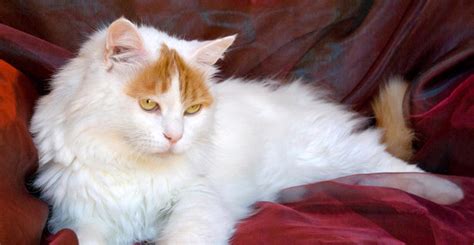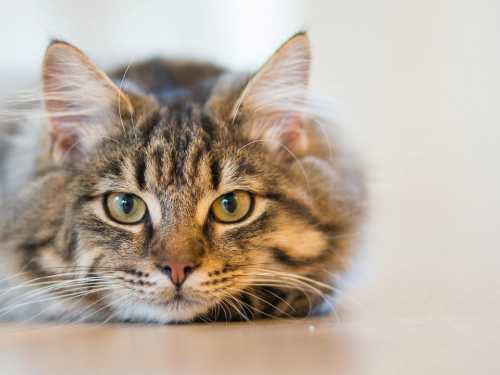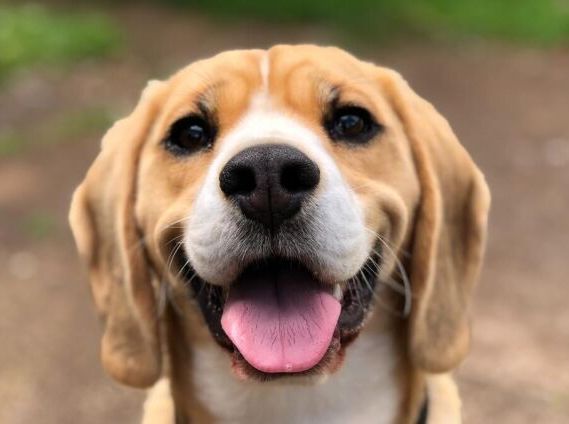
In the mountains in the east of Turkey there is a picturesque lake Van. The Kurdish people have lived in its vicinity since ancient times, and, as is well known, where there are people, there are cats. But in these difficult to live areas, the cats are unusual, with a special character and appearance…
The Turkish Van is a medium-sized, long-haired cat with snow-white fur that never turns yellow, with characteristic color inclusions: symmetrical red-brown spots on the head at the base of the ears, between which there is a thin white stripe, and a fluffy tail of the same color. The saturation of the shade can vary from light cream to darker chestnut. On the left shoulder blade there is a small colored spot, sometimes several spots can be on the back.
There is a beautiful legend about the origin of the Van breed in Turkey.
When Noah built his ark and set sail, the devil sent a mouse onto the ship so that it would gnaw through the bottom, which would inevitably lead to the death of the ship with all its passengers. And then the Lord gave the task to a white cat to find and catch this mouse. The cat quickly and successfully completed the task and thus saved Noah's family from death, for which she received a blessing – the Lord touched her with his hand, giving her a red-chestnut color on her head and tail and leaving a trace of a finger on her shoulder blade. The Kurds call this spot the trace of “the finger of Allah's right hand” and treat Van cats with great respect.
Although it is worth noting that in Turkey cats are generally very much loved, to offend a cat is a great sin. For example, they say that in order to atone for the guilt of killing a cat, a person will have to build seven mosques with his own money, only then will Allah forgive him for what he did.
Another characteristic feature of the Turkish Van's appearance is the absence of an undercoat, the silky wool resembles cashmere and never gets tangled, it is easy to comb. Van is not afraid of water (although everything depends on the individual), swims well and in nature loves to frolic in the shallows of a reservoir, and even knows how to catch fish for itself quite successfully. Its wool has water-repellent properties, and due to the lack of undercoat, it dries very quickly after bathing.
The eyes of Van cats are very large, slightly slanted, the color of the eyes is amber-yellow, blue or different: one eye is blue, the second is yellow. The eyelids are pink, as are the inside of the ears, the nose and the pads on the paws. Weight: male – 6-9 kg, female – 4-5 kg. The Turkish Van is a very hardy and healthy breed, with no genetic diseases. But, of course, this does not mean that these cats are completely insured against diseases and do not need good care.
The Turkish Van's character differs from other breeds by its greater independence and dog-like behavior. Vans are easy to train, love games when the owner throws an object away, and Van finds it and brings it back in its teeth. Vans are easy to train to go for walks on a leash, they love to always be close to their owner, are very gentle and devoted to those they love. Turkish Vans are one of those breeds that easily find a common language with other pets, get along well with dogs, and especially love to take a leading position in the hierarchy.
He loves to play independently for a long time with various toys, because his active nature requires an outlet for his seething energy. And if you do not occupy him with active games, then you need to be prepared for objects thrown off the shelves, curtains torn off and periodically created disorder. This inquisitive animal loves heights and explores all the high points in the house – cabinets, cornices, doors. Kittens under six months are especially active – they often run around the apartment, arranging wild games and fights, developing agility and endurance necessary for survival in the wild. What can you do, genes have an effect … You need to pay attention to their upbringing and training during these months, they will only welcome this and enjoy exploring the world.
But despite such liveliness and activity, Vans are gentle and loving animals, affectionate and devoted. Although they rarely like to be pampered in hands, only at their own discretion, they are happy to sit on the shoulders of their owner and watch everything with interest while he is doing his business.
The Turkish Van, despite its ancient history of origin, was recognized as a breed relatively recently. And this is how it happened…
In 1955, British journalist Laura Lushington and photographer Sonia Halliday were in Turkey on assignment for a British magazine. She was also a big cat lover, and the snow-white Turkish cats with red-brown spots caught her eye with their unusual appearance and habits, not typical for cats. The journalist was given two kittens of different sexes, which she took with her to London. But an interesting incident also occurred in Turkey. When the girls were driving to the airport, the engine overheated due to the intense heat, and they stopped by a stream to rest in the shade and add cold water to the car. The kittens were also let out for a walk and were amazed that they happily jumped into the stream and began to swim and frolic in the shallows.
These two kittens became the first known representatives of the Turkish Van breed in Britain: the male cat was named Van Atilla, and the female cat was registered as Van Guzelli Iskenderun. Four years later, Laura brought two more Van kittens to Britain. The offspring that were produced later had stable, hereditary characteristics that indicated purebredness and pedigree. This was the beginning of the breeding of the Turkish Van in Europe.
In 1973, the Turkish Van breed was included in the standard of the International Cat Fanciers' Federation.





